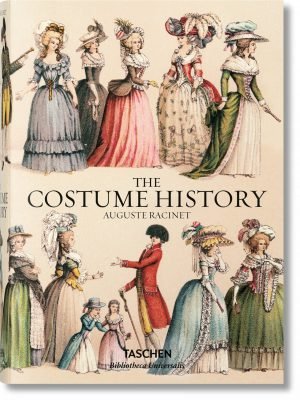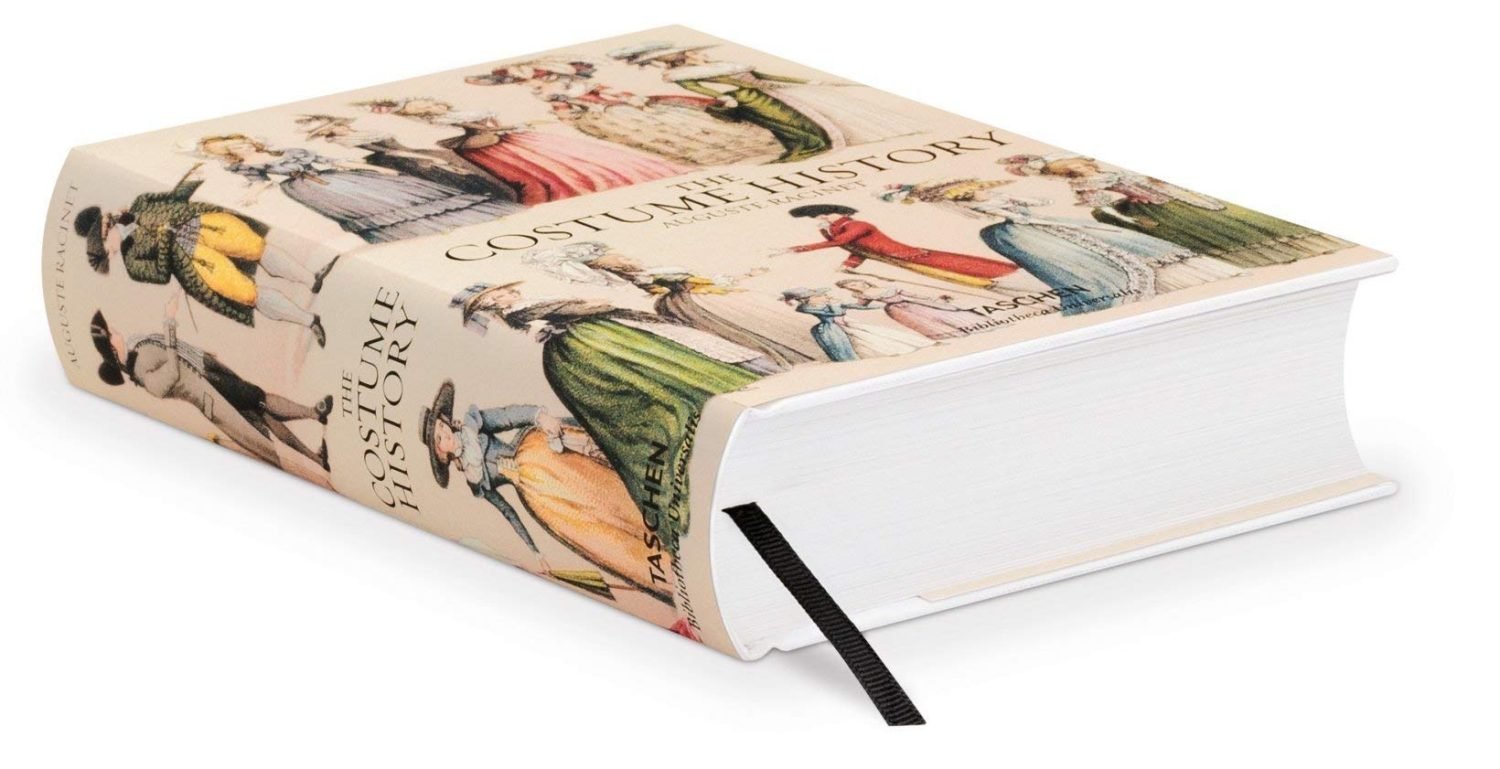
1, 2, 3, 4, 5, 6,
7, 8, 9, 10
Switzerland. Female costumes from Berne, Appenzell, Fribourg, Uri, Lucerne, Schwyz and Unterwalden.
No. 1, 8 and 10: Costumes from the Canton of Berne. As in the rest of Europe, the old national costumes are only worn by maids and peasants in Switzerland. The women of the higher and middle classes follow the French fashion. As can be seen from No. 8, the same fashion has already found its way into the maids’ dresses; for the train skirt of the girl wearing a zober is not of national origin.
The old Bernese costume can still be found in its true grace among peasant women. The skirt is wide and of dark colour, the bodice of black silk or velvet. It has a square cut and does not go up over the bosom (No. 1).
The chest is completely covered with a pleated, very white shirt. Around the neck is a tie of black velvet. Silver chains attached to the ends of this tie fall down over the bodice on each side and are connected to the belt. The shirt sleeves have a very wide cut. The headgear usually consists of a tight-fitting, short cap of black satin placed on the crown of the head, from which black tips fall down on the hair.
The woman of no. 10 is not wearing this headdress, but a cap with an upright tassel on the lid. Often this cap is made of gold or silver fabric.
The costume of the Bernese women, despite its changes, has still been preserved most completely of all Swiss folk costumes. The women of the other cantons differ from each other only in the way they braid their hair and decorate it with ribbons, lace, stuff and pins. The Bernese costume has been preserved best and purest in the Emmental.
No. 2 and 6. Women from the Canton of Appenzell. In this very mountainous region of Switzerland, which has no large towns, but only two or three villages, and which as a whole resembles a large village made up of isolated huts, the old customs are still most tenaciously adhered to. The characteristic feature of the Appenzell women’s costume is the bonnet of black gauze that rises above the head like a stiff comb in the shape of two butterfly wings.
No. 3. Married woman from the Canton of Fribourg. This woman comes from the German half of the canton, where the old customs have been better preserved than in the French. Marriage is considered a particularly important act in this region. It is customary for the groom and bride to wear the clothes of their grandparents at the ceremony to confirm that they want to live in the manner of their forefathers. The cap resembling a hussar’s cap, the collar and the metal shoe buckles date back to early times. The jewellery consists of a long, fine necklace from which hangs a large, silver foam coin called an agnus dei. In the canton of Schaffhausen, the cap is even higher and heavier. The skirt and stockings are usually red.
No. 4. Woman from the Canton of Lucerne. A tapered bodice of black velvet, which is much tighter than that of the Bernese women, a folded shirt covering the chest, a neckerchief, a loose jacket open at the front with wide sleeves, which are provided with narrow lapels, a cap with a wide frill, which surrounds the head like a black, transparent nimbus, and an apron are the components of this costume, which has little characteristic.
Nos. 5, 7 and 9. Woman from the Canton of Schwyz. – Woman from the canton of Uri, woman from the canton of Unterwalden.
The national costume of the people of Unterwalde, and especially that of the women, is one of those that is disappearing more and more. It consists of a short, wide skirt made of brown fabric, a red belt, blue stockings and dainty shoes. The hair braids are held together at the back by a spoon-like pin. The shoes often have metal heels.
On No. 9 we find the hair arrangement mentioned above, the cute shoes with ribbon rosettes, a necklace tightly encircling the neck like a neck iron, the broad high bib trimmed on each side with broad hangings of silver filigree, the wide shirt sleeve, roundly serrated at the bottom, joined at the wrist with a velvet ribbon, and a broad silk apron.
The costume of the young woman from the canton of Schwyz (No. 5) has the peculiarity that, without reaching as far into the past as that of the woman from Unterwald, it has no modern component. Apart from the high gauze cap, everything about this costume belongs to the previous century. The arrangement of the hair, the paling of the neck, the breastcloth and the short sleeves are features of French fashion before the Revolution.
The female costumes in the canton of Uri (No. 7) are reminiscent of the Italian folk costumes. The women of Uri wear the handkerchiefs tied around their heads like the Italians; it is also the Italian custom to wear the breast cloth under the tied bodice. Swiss women used to wear half stockings that only covered the calf.
(After photographs by A. Braun & Co. in Dornach and watercolours by J. Bastinos.)
Source: History of Costume in Chronological Development by Auguste Racinet. Edited by Adolf Rosenberg. Berlin 1888.








